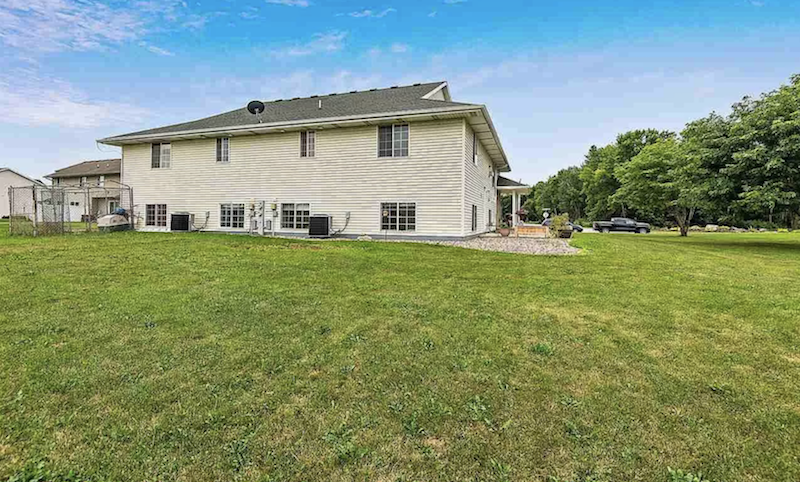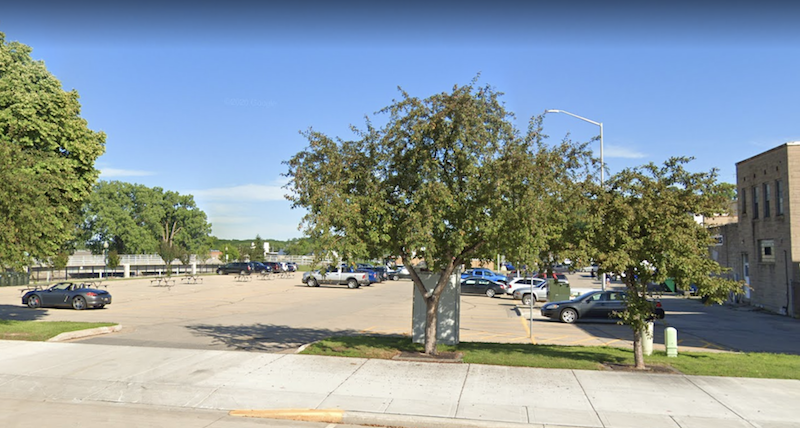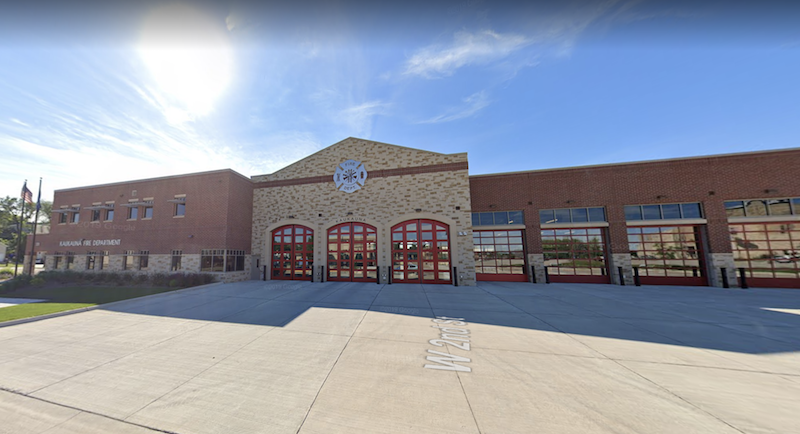We’d Rather Have the Iceberg Than the Ship
I recently bought a house in Madison, Wisconsin, but before I did I went through a series of adventures in different parts of the state exploring the property market. I was initially interested in Wisconsin because I have extended family there and they encouraged me to look at Appleton. They described it as a safe, prosperous, and growing community populated by good people. There’s a historic downtown, Lawrence University, the medical center, and it’s the county seat. As proof of its bright future they also mentioned Amazon is building a giant fulfillment center out by the airport. I found a real estate agent, described what I was looking for, and she began sending me links to available properties.
What I requested was a building with a bit of architectural character in a walkable neighborhood near civic amenities, quite possibly within a bicycle ride of the university, public parks, restaurants, and shops. I asked for a duplex, thinking I would be buying a place that I would co-own with family members. They could have their half, I could have mine. Win win.
These are the places she suggested instead. I looked at the filter she had set on the listings and she had eliminated any property that was built before 1990. That guaranteed the homes on offer would all be out on the suburban fringe along the highways instead of in town. When I asked her about this she was confused and set about educating me on the property market in Appleton.
She explained that you don’t want an older home because they have too much deferred maintenance. Bringing them up to a modern standard is too expensive relative to their resale value. Taxes are too high in old neighborhoods so you want to buy across municipal lines outside the older city limits. You get more house for less money with lower taxes in the newer developments. The schools are much better in the newer areas, and people shop for school districts more than they shop for a house itself. While Appleton is a very safe little city, crime is always a bigger problem at the core compared to the edges. You have to think of the children. And a newer home on a larger lot is a better investment because that’s what quality buyers want. Older homes don’t appreciate, they decline.
What she was telling me was no doubt true from her perspective. She reflected the values not just of Appleton, but most of America and the people who choose to live in these places. She wasn’t wrong. But aside from the fact that I didn’t care for any of these homes and was never going to buy in these locations, I realized the truth of the Appleton model. Thirty years from now all the new homes she’s selling will slip into the “old” category and will gradually fester as taxes rise and the middle class migrates to new greenfield developments. These older places (the homes being built today) will then be populated by lower class people with fewer resources and less status thereby reinforcing the perception that it’s best to move on if at all possible. These are fungible, forgettable, disposable places that rapidly age and are then left to quietly decay.
There’s also the problem of aging commercial real estate. Over the last few generations we’ve witnessed the wholesale abandonment of Main Street in favor of strip centers, big box stores, and regional shopping malls. Now these retail centers are getting old and are being squeezed hard by online commerce and home delivery. The Amazon fulfillment warehouse that’s so aggressively subsidized by local government and heralded as “growth” out on the edge of the metroplex is effectively replacing the dried husk of the Fox River Mall and various lesser shopping plazas. This isn’t an additive process. It’s slash and burn urbanism and it doesn’t end well.
The “good news” is these places were built fast and cheap and were never meant to last anyway. They have a construction lifespan exquisitely tuned to match the amortization and depreciation schedules of the financial underwriters. As soon as they stop spinning off cash flow and tax advantages to distant investors they’re toast. Then they become someone else’s problem. If the value of the dirt is high enough someone will redevelop the property into something different, but only with the appropriate sweeteners from “business friendly” local government, meaning heavy subsidies and tax holidays. These deals tend to be a hostage negotiation.
Within the continuous greater Appleton region for ten miles in any direction are dozens of smaller municipalities that have been engulfed by suburban development for most of a century. Little vestiges of once prosperous towns linger in diminished form embedded in the sprawl. These towns were built along barge canals, small hydroelectric dams, and productive mills. Many of the surviving buildings have been partially occupied or completely vacant for decades. Half the original structures were so devalued that they were torn down and replaced with surface parking lots. A number of them are used as low grade storage facilities or budget consignment shops.
LoopNet
LoopNet
Out of curiosity I looked at how much one of these buildings costs. This winter this place with a defunct Chinese restaurant on the ground floor and a vacant two bedroom apartment upstairs was offered at $85,000. The cost of the restaurant equipment alone, the industrial stoves, deep fryers, walk-in refrigerators, stainless steel work tables, and fire suppressing vent hoods would have been close to that price. The building had been on the market for a very long time with no bids. It eventually sold a few months ago for $65,000. For comparison, here’s a review of a $65,000 luxury 2021 Ram pickup truck.
Someone removed the restaurant interior and opened a collectibles shop that sells baseball cards. This shop activates the storefront and keeps the place warm so I’m all for it. But unless this enterprise does most of its sales via the interwebs it’s going to struggle to survive. Fortunately the overhead is shockingly low. It will all keep ticking along until the building needs a big ticket item like a structural repair to a failing brick wall or cracked foundation. Then it starts down the road to a parking lot conversion.
Bing
Back when this town was at its peak a century ago each of these vacant parcels had multiple buildings on them. They’re all gone now. I called the local business improvement district office as well as the town planner and chatted with people in various departments. They gave the usual sales pitch about how they’re creating a vibrant retail Main Street with historic character. They mentioned the new decorative lamp posts, flower beds, festive flags, and seasonal celebrations. “Did you see our eagle sculpture?” I got a flashback to Colerain Township, Ohio.
Blighted buildings had been replaced with a new fire station, middle school, city offices, and a new police station. And there are plans for infill development once financing and enough vacant parcels are aggregated to accommodate modern buildings. (AKA Texas Doughnuts.) My sense is that they’re jumping on the city planning fashion bandwagon twenty years too late.
What I see for the future of this spot is a variation on things I’ve seen elsewhere around the country. A sliver of Ye Olde Towne is preserved for sentimental reasons and turned into a de facto themed strip mall. In this location, with the prevailing culture and economy… I don’t see this being much more than a mediocre collection of cosmetic patches that will limp along half assed until the next fad arrives in another twenty years. It’s not a terrible situation, but it’s not “transformative” or “catalytic” either. I gave these officials my usual blunt assessment. They didn’t like my tone.
So here’s the big picture. All of America’s institutions are focused exclusively on churn. Crank out new stuff, sell it fast, cash out, and move on to the next project. Blighted neighborhoods aren’t an accident. They’re baked in to every facet of how we do everything. Successful individuals and savvy investors know this instinctively and keep moving every five or ten years to the next new better place. This is also true of municipal officials and private consultants who continually hopscotch from job to job leaving behind districts that have peaked in favor of ones that are still growing.
I’d love for people to stop pretending otherwise and just be honest about the situation. You get a really good run for a few decades. Then things slowly turn to crap as the vinyl siding and synthetic stucco start to peel off. We’re going to continue to do this until we simply can’t anymore for one reason or another. Then we’ll have no choice but to start re-inhabiting the dregs that were left behind. Some places will be more worthy of salvation than others. Shrug.
I’m reminded of Elizabeth Bishop’s poem “The Imaginary Iceberg” which begins, “We’d rather have the iceberg than the ship, although it meant the end of travel.” That’s how I feel about the North American development pattern. It’s ephemeral. In the long arc of history no one will miss any of these places. Future generations will be busy doing entirely different things with the landscape they’ll inherit. I’ve made my peace with that reality.































